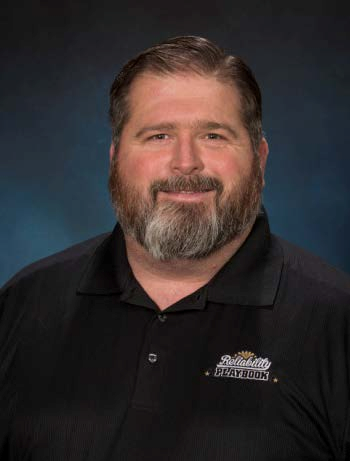Description
For years we have heard how a “good” lubrication program can help improve your plant reliability program.
This presentation will show the history of poor lubrication practices and the lack of attention given to one of the most foundational elements of plant reliability. This presentation will show the effects of what happens when poor lubrication practices are executed efficiently. This discussion will be an interactive session for attendees to test their knowledge and identify the issues and opportunities in each case study.
The second portion of this presentation will discuss the proper steps in developing a new program or revamping an existing one. A good plant lubrication program is vital to success for any facility. Lubrication has a direct effect on equipment reliability. If you have a good lubrication strategy, you will improve your plant and equipment uptime. If you execute poor lubrication practices you will not achieve the success you are looking for.
Which lubrication misconceptions are hurting your operations? It’s well worth your time to find the answers. Addressing lubrication issues can provide any industrial facility with significant financial opportunities and a rapid return on investment. Keep in mind that lubrication is 100-percent proactive maintenance, which makes it an ideal approach for those seeking to break the profit-draining cycles of corrective and reactive maintenance.
By following lubrication best practices and using appropriate management tools, industrial facilities are able to reduce unplanned downtime and reactive maintenance, eliminate the primary cause of equipment failure at its source, achieve higher productivity from existing equipment assets and personnel, and minimize oil waste and environmental costs.
For any given plant, there are a number of important steps that, if implemented, will increase equipment reliability. This presentation will discuss the lubrication best practices that can help companies achieve the optimal result in maintenance costs compared to production reliability.
Bio
 Paul Dufresne has been president and CEO of Reliability Playbook since 2017, following 28 years of experience in maintenance and reliability roles in the U.S. Military and at Georgia Pacific, Trico Corporation and Koch Industries. As an enlisted soldier in the U.S. Army, Paul served six years of active duty and four years of National Guard duty. After completing his college education, Paul received his commission and served an additional four years of active duty as an officer in the Army’s Armor Branch. He spent the next several years in the corporate world helping design and implement predictive maintenance programs and serving in a variety of roles in training, maintenance management and reliability leadership. In 2013, he received the Senior VP Award for Reliability from GP.
Paul Dufresne has been president and CEO of Reliability Playbook since 2017, following 28 years of experience in maintenance and reliability roles in the U.S. Military and at Georgia Pacific, Trico Corporation and Koch Industries. As an enlisted soldier in the U.S. Army, Paul served six years of active duty and four years of National Guard duty. After completing his college education, Paul received his commission and served an additional four years of active duty as an officer in the Army’s Armor Branch. He spent the next several years in the corporate world helping design and implement predictive maintenance programs and serving in a variety of roles in training, maintenance management and reliability leadership. In 2013, he received the Senior VP Award for Reliability from GP.
Incorporating knowledge from his military and business careers, Paul uses a hands-on approach to help customers across the country and internationally develop and implement world class maintenance and reliability programs. Paul has experienced successful results throughout his career, including:
• Achieving and maintaining maintenance readiness of over 95 percent in his battalion while serving as maintenance officer.
• Rebuilding the lubrication and predictive maintenance program at a Georgia Pacific mill, achieving world class reliability standards and increasing uptime by 5 percent annually across all five paper machines within 18 months of starting.
• Writing GP’s lubrication standards in 2010 that are still in corporate-wide use today.
• Breaking every production record in the history of the business during his three years as corporate reliability and engineering manager in GP’s oriented strand board business.
• Creating and strengthening maintenance and reliability programs – achieving world class results – at Fortune 500 companies in nearly every industry from biopharmaceutical
plants to steel mills, refineries to paper mills, etc.
• Rebuilding a team and instituting process improvements at a corporate facility that led to a $60 million improvement in production.
Paul serves as chairman of the Society of Maintenance and Reliability Professionals Best Practices Committee. He is a member of the Society of Tribologist and Lubrication Engineers and the Industry Council for Machinery Lubrication. He holds credentials through STLE as Certified Lubrication Specialist (CLS); through SMRP as Certified Maintenance and Reliability Professional (CMRP) and Technician (CMRT); through the Association for Facilities Engineering as Certified Plant Maintenance Manager (CPMM); and through the Association of Asset Management Professionals as Certified Reliability Leader (CRL). Paul is certified in predictive maintenance technologies such as vibration analysis and thermography. He has written several articles and technical white papers and is a frequent presenter at industry conferences.
Paul is a Distinguished Military Graduate and has a bachelor’s degree in history with a minor in military science from the University of Central Florida. He and his wife, April, have four children.